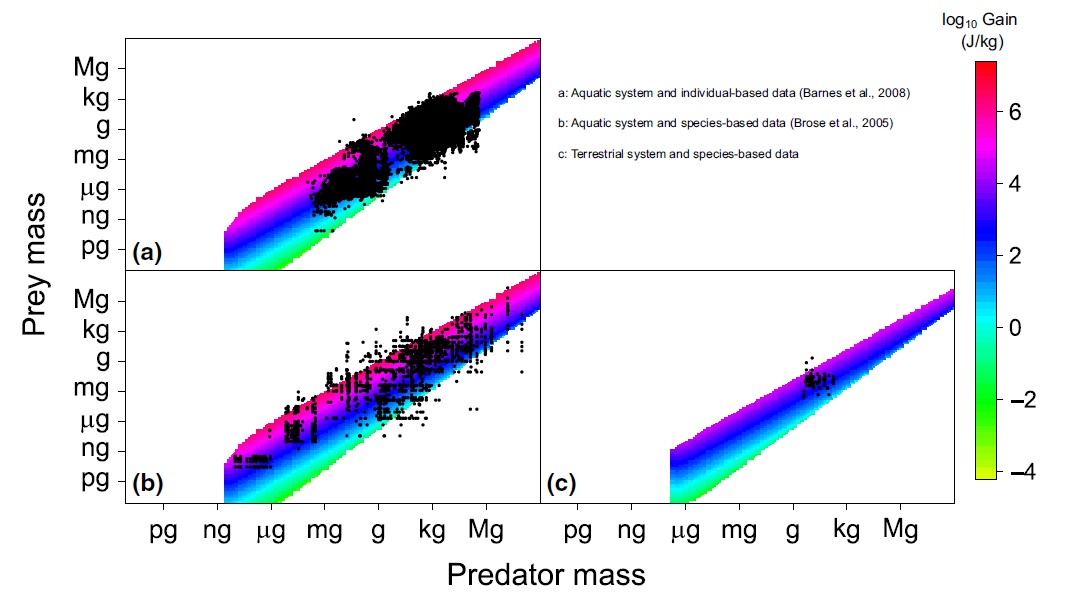Research Interest

I have a broad interest in Community Ecology. I investigate how natural communities are structured and how they evolve. More specifically, I study which factors determine species persistence and species interactions. In other words, my goal is to understand why a given species will persist in a given ecosystem, while another one cannot; why a link (e.g., trophic link) is possible between two species, while another link is not possible. Species interact with other species (e.g., predator, prey, parasite, competitor) that may drive their persistence. Abiotic factors (either physical or chemical) can also constraint species persistence and interactions.
My work implies use of mathematical models in order to investigate these factors and their effects on community structure.

Ecological mechanics: the surrounding medium plays a fundamental and often implicit role on community structure. The physical factors characterizing the medium (such as gravity, density, viscosity, or light availability) play a fundamental role in species persistence and species interactions at any trophic level. It constrains phytoplankton persistence, predator-prey interactions, and size-structure of food webs. Species evolution occurs under these constraints.
Relevant articles:
- Portalier S.M.J., Cherif M., Zhang L., Fussmann G. F., Loreau M., 2016, Size-related effects of physical factors on phytoplankton communities, Ecological Modelling.
- Portalier S.M.J., Fussmann G. F., Loreau M., Cherif M., 2019, The mechanics of predator–prey interactions: First principles of physics predict predator–prey size ratios, Functional Ecology.

Community dynamics under a changing environment: changes in the temperature regime affect the way species can persist or interact with one another. Many species show a resting period during their life cycle (e.g., dormancy, diapause). The duration of this resting period is often driven by temperature. If two interacting species do not respond in the same way to temperature, a change in temperature regime can affect the way they interact. Moreover, human activities create increasing pressure on natural ecosystems. All together, these factors create constraints on species persistence and interactions.
Relevant articles:
- Portalier S.M.J., Candau J.-N., Lutscher F., 2022, A temperature-driven model of phenological mismatch provides insights into the potential impacts of climate change on consumer–resource interactions, Ecography.